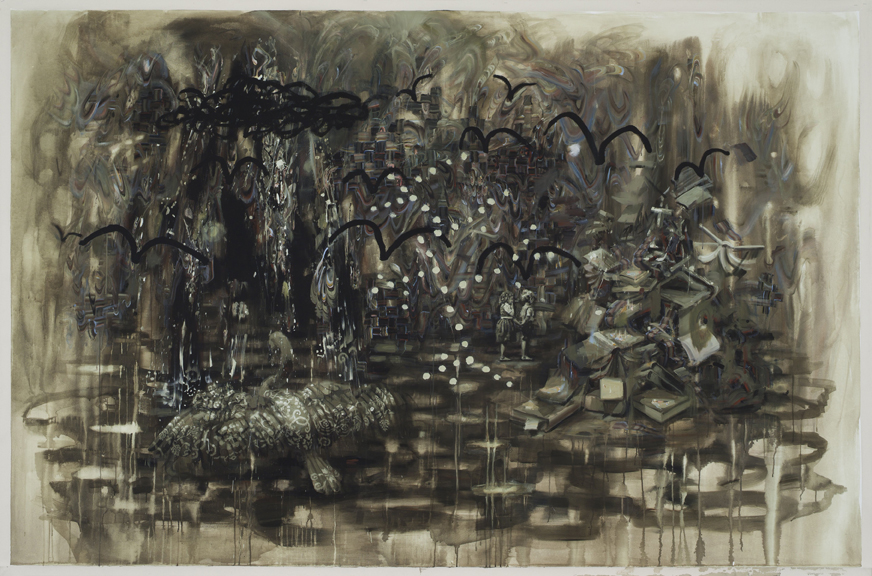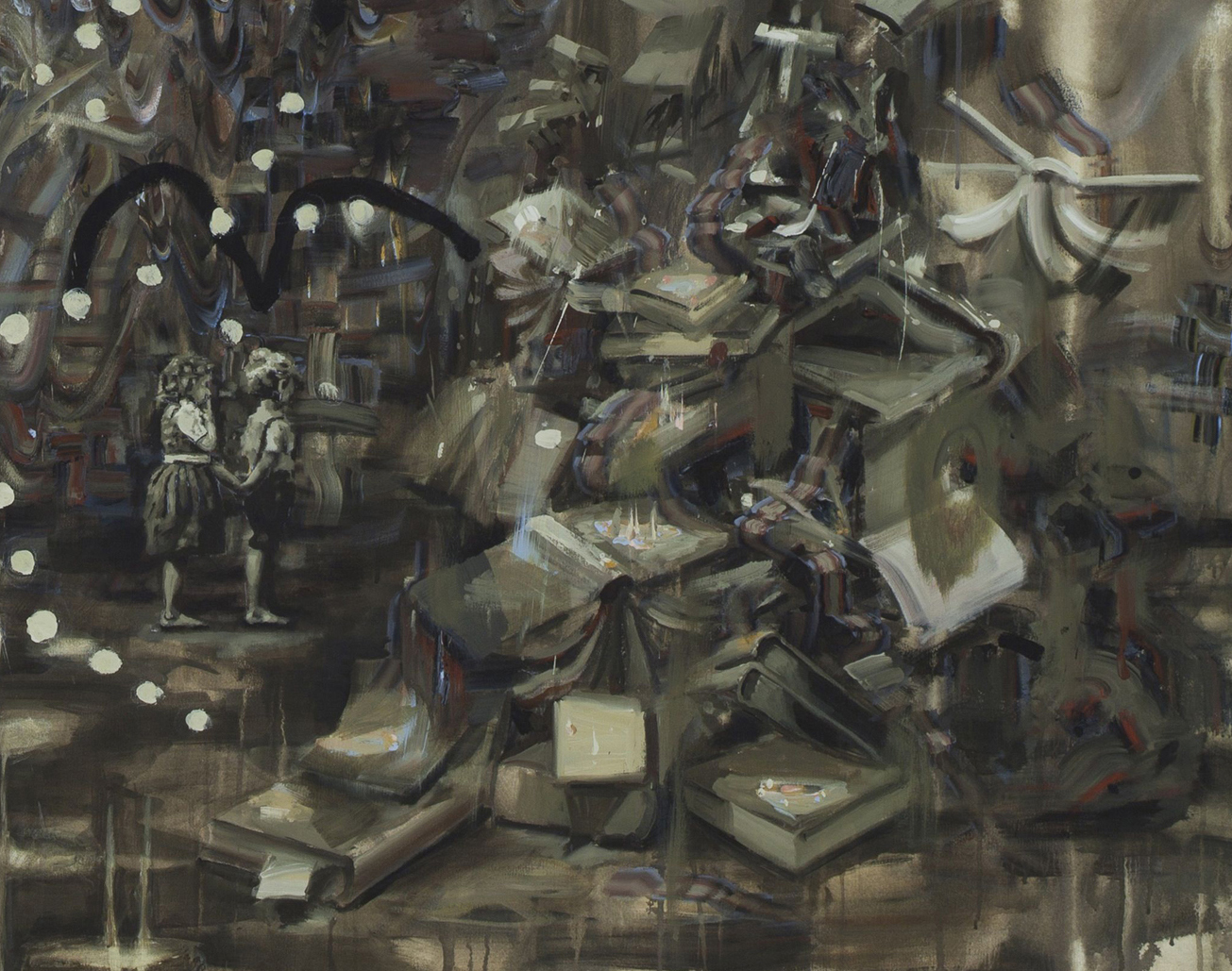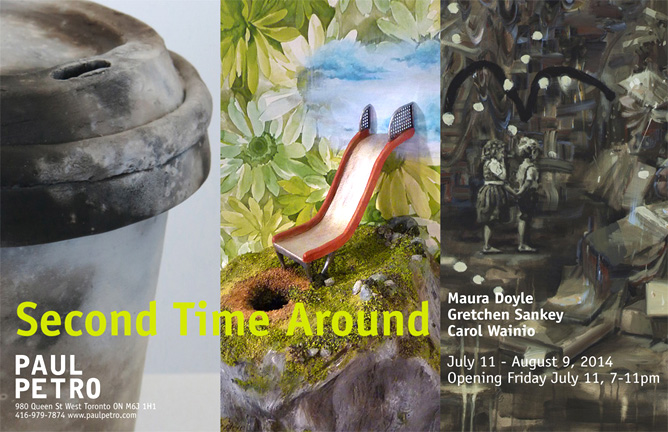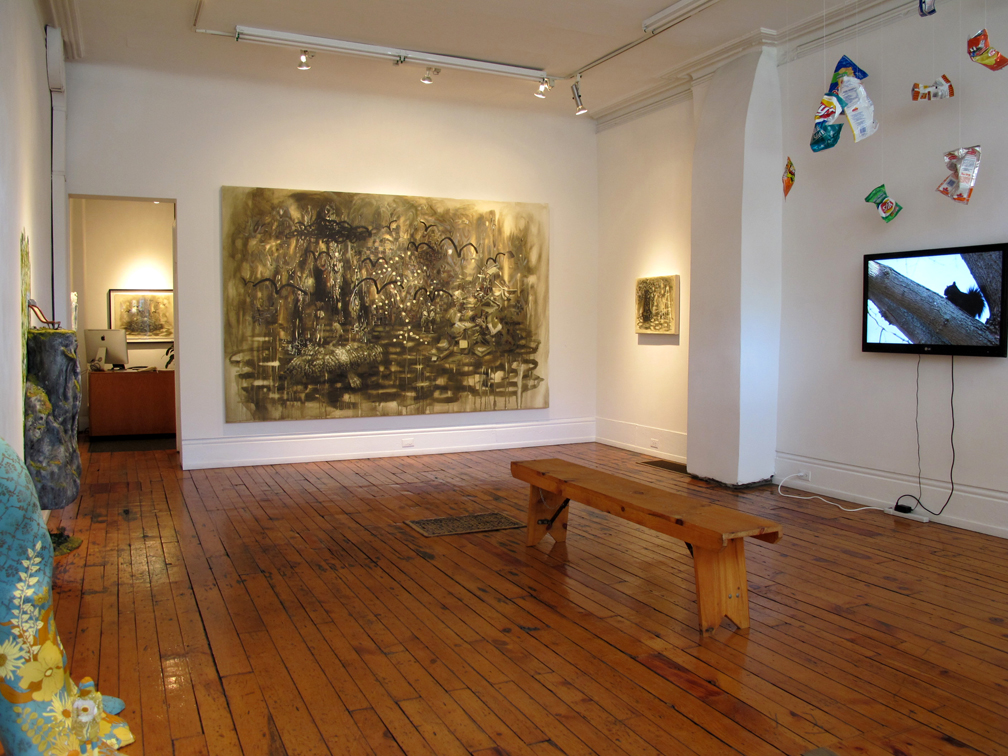Second Time Around
Maura Doyle, Gretchen Sankey, Carol Wainio
July 11 - August 16, 2014

Second Time Around
In May 2009, when Maura Doyle was close to completing her MFA at the University of Guelph, our gallery hosted her thesis exhibition, New Age Beaver. The show consisted of a beaver pond nature video, works on paper , beaver sculptures (which are reenactment a of actual beaver works and all installed at beaver-eye level) and a beaver log that travelled through the Panama Canal, complete with Panama beach towel, suitcase and luggage tag. There was also a publication that accompanied the exhibition, A Guide to Beaver Architecture – Sticks and Mud Reconsidered, produced in the style of a 1950s field guide. The book included an essay by Doyle and reproductions of works on paper and sculpture along with found images. Doyle’s field work concluded that beavers had gotten into recycling, noting the discovery of a pink t-shirt and a kerosene lamp amongst other objects integrated into the beaver dams.
The idea of the effective repurposing by beaver populations of our consumer waste has lingered on long since the exhibition. It occurred to me that artists and beavers had found objects in common and that a raising or altering of environmental consciousness had become an additional healthy byproduct of this naturalized activity. It was the retro nature of the field guide that brought Gretchen Sankey’s evocations of childhood and her use of vintage wallpapers to mind and a quote from Faulkner’s Requiem for a Nun that Sankey shared with me: “The past is never dead. It’s not even past”. While tumbling down that rabbit hole, evinced by Sankey’s Mountain Slide, I arrived at Carol Wainio’s Nature of Things (Archive) and a tumult of history concentrated in a heap of books.
There’s a certain wistfulness to the idea of these field guides from the 50s and 60s (I have a shelf full of them at the cottage, Doyle’s included) and the documentation of those prodigious builders and custodians of the natural world – insects, birds, fauna and flora (I want to add artists to this fold) – and our relationship as human beings to that activity. Are we one with nature or do we run parallel to it? Will collectively changing our habits of energy consumption assuage the fallout of global warming and give the planet a second chance? The presence of an oil derrick in Wainio’s work, looming over Hansel & Gretel, brings that question to mind. The flock of birds lifting off the mound of books suggests the migration of ideas and the sociology of knowledge as well as the legacy of the printed word. Can we learn from our mistakes? If Wainio’s work is about understanding then Sankey’s work is about trying and Doyle’s work suggests that nature can teach us a thing or two.
For the exhibition Second Time Around I elected to bring back several works from New Age Beaver because the power in a work of art does not get used up after being shown, screened or otherwise introduced into the world first time around. I thought it was important to establish the terms of the exhibition with this gesture. Doyle’s DVD Toronto 2010, produced in 2007, reveals some of the history behind New Age Beaver while reckoning with urban rodent, bird and insect cultures alongside the spectacle of our mass consumption. Following on Doyle’s clay Garbologic Objects that we showed in 2012 we decided to include three new works related to Who The Pot?, an exhibition by Doyle at YYZ last month, thereby creating an opportunity to meditate on the iconic value of a paper coffee cup, a plastic water bottle and a pump dispenser once removed (by clay) alongside the potato chip bags of Toronto 2010.
I’m mentioning these steps in spite of the fact that I like the invisibility of the curator’s hand in things, something along the lines of the seamlessness in Douglas Hofstadter’s book from 1979, Göedel, Escher, Bach: An Eternal Golden Braid and Shalamar’s Second Time Around, their disco hit from the same year.
-- Paul Petro, July 2014
From Wikipedia, the free encyclopedia:
Gödel, Escher, Bach: An Eternal Golden Braid, also known as GEB, is a 1979 book by Douglas Hofstadter. The tagline "a metaphorical fugue on minds and machines in the spirit of Lewis Carroll" was used by the publisher to describe the book.
By exploring common themes in the lives and works of logician Kurt Gödel, artist M. C. Escher and composer Johann Sebastian Bach, GEB expounds concepts fundamental to mathematics, symmetry, and intelligence. Through illustration and analysis, the book discusses how self-reference and formal rules allow systems to acquire meaning despite being made of "meaningless" elements. It also discusses what it means to communicate, how knowledge can be represented and stored, the methods and limitations of symbolic representation, and even the fundamental notion of "meaning" itself.
In response to confusion over the book's theme, Hofstadter has emphasized that GEB is not about mathematics, art, and music but rather about how cognition and thinking emerge from well-hidden neurological mechanisms. In the book, he presents an analogy about how the individual neurons of the brain coordinate to create a unified sense of a coherent mind by comparing it to the social organization displayed in a colony of ants.









